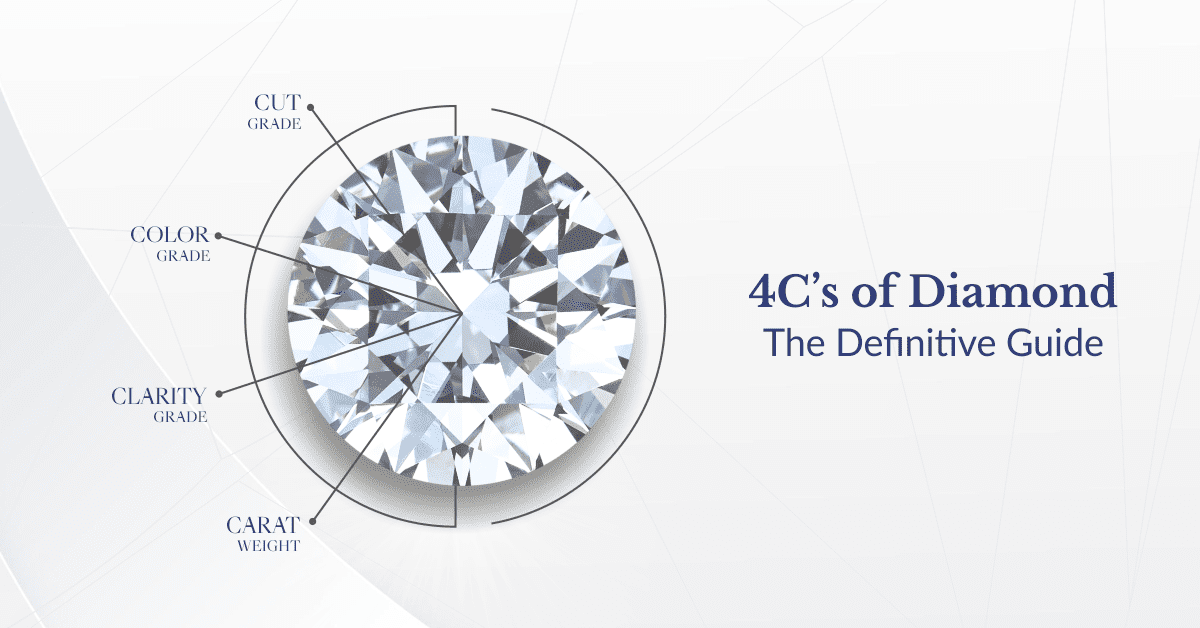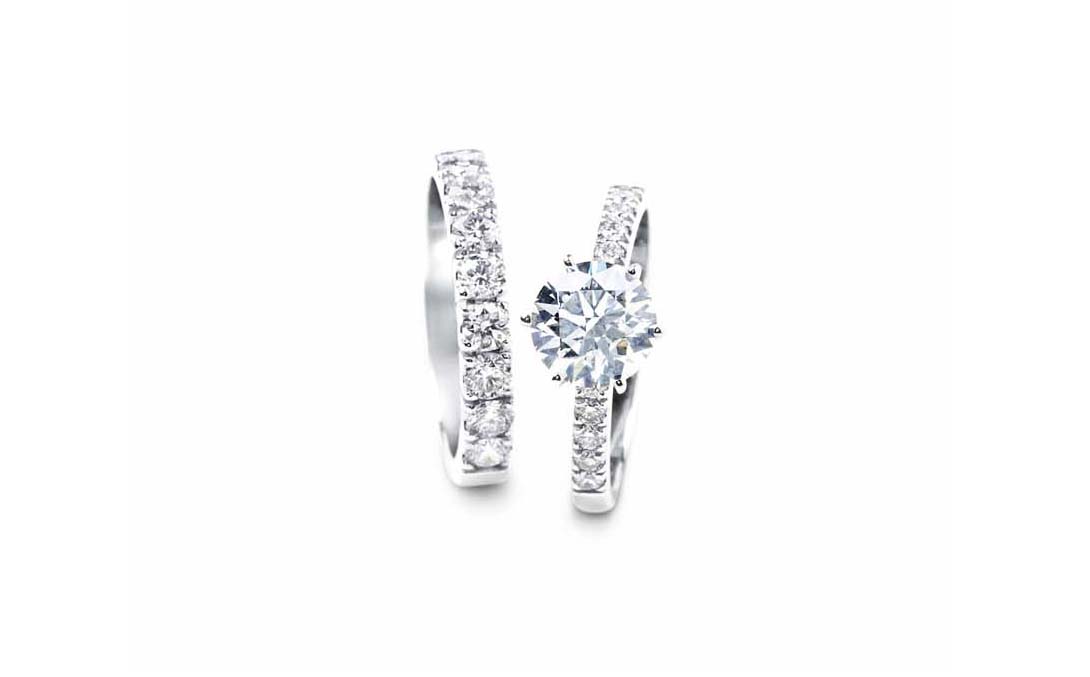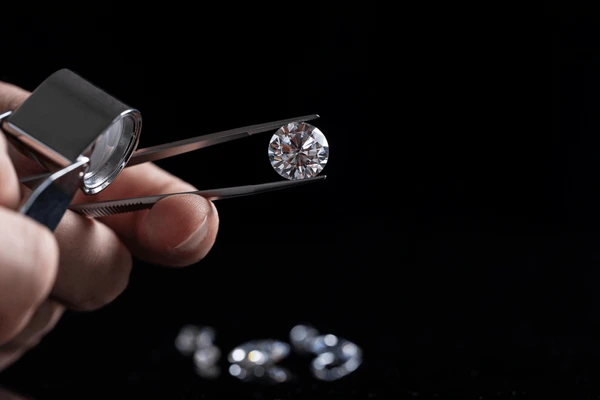The 4Cs of Diamonds: Cut, Color, Clarity, and Carat
The 4Cs—Cut, Color, Clarity, and Carat—are the globally recognized standards used to assess the quality and value of a diamond. Understanding these four essential characteristics will help you choose the best diamond for your needs. Each of the 4Cs plays a crucial role in the diamond’s overall beauty and value. Below, we dive into each characteristic in more detail to provide an in-depth understanding of how diamonds are graded.
1. Cut
The cut of a diamond is one of the most important factors affecting its brilliance and overall appearance. Cut doesn’t refer to the shape (like round or oval), but rather to how well the diamond has been crafted from its raw form. A high-quality cut will make a diamond reflect light beautifully, maximizing its sparkle and brightness. A poor cut, on the other hand, can make even a high-quality diamond appear dull and lifeless.
What Determines the Cut Quality?
Three main components contribute to the overall quality of a diamond’s cut:
-
- Proportions: This includes the angles and dimensions of the diamond, such as the depth, table, and crown. Proper proportions allow light to enter the diamond, reflect off the facets, and return to the viewer’s eye, creating a brilliant sparkle.
-
- Symmetry: Symmetry refers to how precisely the diamond’s facets are aligned. Poor symmetry can cause light to be misdirected, leading to less brilliance.
-
- Polish: Polish refers to the smoothness of the diamond’s surface. A well-polished diamond allows light to pass through the facets without obstruction, enhancing its brightness.
Cut Grades:
Diamond cuts are graded by organizations like GIA (Gemological Institute of America) into five categories:
-
- Excellent: Maximum brilliance and fire. These diamonds reflect nearly all the light that enters them.
-
- Very Good: Only a small amount of light is lost. They appear almost as brilliant as Excellent cuts.
-
- Good: Reflects most light well, but some may escape due to slight misalignments.
-
- Fair: Less brilliance and sparkle due to a more significant amount of light being lost.
-
- Poor: Much of the light escapes from the bottom or sides of the diamond, resulting in very little sparkle.
Popular Diamond Shapes:
While cut quality focuses on craftsmanship, the shape of the diamond is also important for aesthetic reasons. Popular diamond shapes include:
-
- Round: Most brilliant and classic shape.
-
- Princess: Square shape with sharp corners, second in popularity.
-
- Emerald: Rectangular with step cuts, known for its elegant, vintage appeal.
Each shape can reflect light differently, but the round brilliant cut is renowned for delivering the most sparkle.
2. Color
The color of a diamond refers to the absence of color. Diamonds are graded on a scale from D (colorless) to Z (light yellow or brown). The less color a diamond has, the rarer and more valuable it is. Even slight color differences can significantly affect the diamond’s price, especially in the higher grades.
Color Grading System:
-
- D-F (Colorless): These diamonds have virtually no color, appearing icy white and very rare. The difference between D, E, and F grades is minute and only detectable by an expert under magnification.
-
- G-J (Near Colorless): These diamonds have a slight tint that is generally unnoticeable to the untrained eye, especially when set in jewelry. They offer an excellent balance between quality and value.
-
- K-M (Faint Color): These diamonds have a noticeable yellow or brown tint. They are more affordable but less desirable in fine jewelry.
-
- N-Z (Very Light to Light Color): These diamonds display an obvious color, often used in fashion or vintage pieces where color can be part of the design.
Impact of Diamond Setting:
The metal used in the jewelry setting can affect how the diamond’s color is perceived. For example:
-
- Platinum or white gold settings enhance the icy whiteness of colorless diamonds.
-
- Yellow or rose gold settings can make diamonds with slight tints appear more colorless.
While most customers seek diamonds in the D-J range for their brilliance and near-invisibility of color, diamonds with lower grades can still look stunning when paired with the right design.
3. Clarity
Clarity refers to the internal and external imperfections found in a diamond. These imperfections are known as inclusions (internal flaws) and blemishes (external flaws). Diamonds form under extreme pressure and heat, so it’s natural for most diamonds to have some flaws. The fewer the flaws, the higher the clarity grade and the more valuable the diamond.
Clarity Grading System:
Clarity is graded under 10x magnification, and the grades are as follows:
-
- Flawless (FL): No inclusions or blemishes are visible under 10x magnification. These diamonds are extremely rare and valuable.
-
- Internally Flawless (IF): No inclusions, but some minor blemishes on the surface.
-
- Very Very Slightly Included (VVS1 and VVS2): Inclusions are so small they are difficult for even a skilled grader to see under magnification.
-
- Very Slightly Included (VS1 and VS2): Inclusions are minor and range from difficult to easy to see under magnification but invisible to the naked eye.
-
- Slightly Included (SI1 and SI2): Inclusions are noticeable under magnification and may be visible to the naked eye in some cases.
-
- Included (I1, I2, I3): Inclusions are obvious under 10x magnification and may affect transparency and brilliance.
Types of Inclusions:
-
- Feathers: Small cracks within the diamond that resemble feathers.
-
- Clouds: Groups of tiny inclusions that can create a hazy effect.
-
- Crystals: Minerals trapped inside the diamond.
-
- Cavities: Small holes or indentations on the diamond’s surface.
Does Clarity Affect Sparkle?
Yes. Inclusions can interfere with how light passes through the diamond, affecting its brilliance. However, diamonds with inclusions that are not visible to the naked eye (VS1 or SI1) can still appear stunning, offering excellent value.
4. Carat
Carat refers to the weight of the diamond, not its size. One carat is equal to 200 milligrams. While carat weight can affect the overall price, it’s important to remember that carat is only one factor in determining a diamond’s value. A larger diamond that is poorly cut or has low color or clarity grades may be less valuable than a smaller, higher-quality diamond.
Carat Size vs. Perceived Size:
Diamonds of the same carat weight can appear different in size based on their shape and cut quality. For example:
-
- A well-cut, shallow diamond may look larger than a deeper, poorly cut diamond of the same carat weight.
-
- Certain shapes, such as marquise or oval, can create an illusion of a larger diamond.
Carat Weight and Price:
As carat weight increases, so does the price. However, diamonds just below popular weight categories (such as 0.9 carats instead of 1 carat) often offer better value without a noticeable size difference.
Popular Carat Weights:
-
- 0.5 carat diamonds are perfect for those who prefer subtle, delicate jewelry.
-
- 1 carat diamonds are a popular choice, offering a balance between size and price.
-
- 2 carat and higher are considered more luxurious, making a bold statement.
Conclusion
Understanding the 4Cs—Cut, Color, Clarity, and Carat—allows you to choose the right diamond that balances beauty, quality, and budget. While all the Cs are important, personal preference and what matters most to you should guide your final decision. Whether you’re looking for maximum sparkle, a large stone, or a unique color, the 4Cs provide a framework to find the perfect diamond for your needs.





